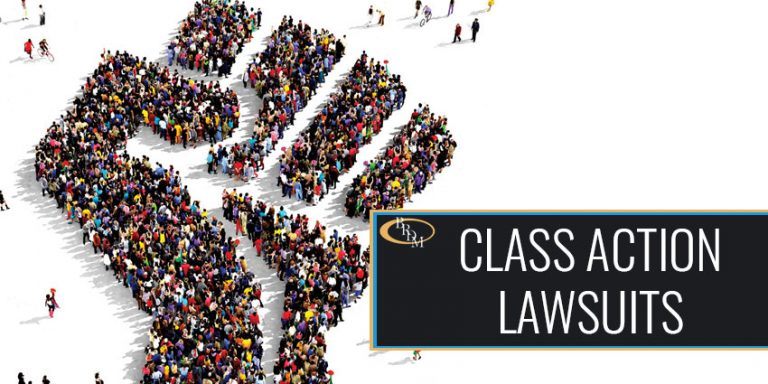Archer-Daniels-Midland Class Action Lawsuit: Your Legal Roadmap
Archer-Daniels-Midland Class Action Lawsuit: Your Legal Roadmap
Blog Article
Exploring Course Activity Suits: What You Need to Know
Class action legal actions have ended up being significantly widespread in today's legal landscape, with individuals signing up with forces to prosecute against companies and companies. In this discussion, we will discover the ins and outs of course action lawsuits, clarifying their definition, the demands for declaring, and the prospective benefits and disadvantages included. Furthermore, we will certainly explore the actions included in a class activity legal action and analyze some recent spots instances that have formed this location of regulation. Recognizing the intricacies and nuances of class activity suits is critical for anyone looking for justice in a collective fashion, so let's start our exploration together.
The Definition of Course Activity Suits
A course action legal action is a legal activity filed by a team of people that have comparable insurance claims versus an accused. Class activity claims are generally brought when the number of prospective complainants is too big for private claims to be functional.
One of the crucial components of a class activity lawsuit is that the lead complainant, additionally referred to as the class agent, represents the interests of all the class members. The court assigns the lead complainant based upon their ability to rather and adequately stand for the course. The lead plaintiff functions carefully with the course activity attorney to seek and construct a solid instance payment or other solutions in behalf of the entire class.
In order for a course action lawsuit to proceed, the court has to accredit the class. This means that the court determines that the lawsuit meets particular requirements, such as numerosity (a large enough variety of class participants), commonality (typical inquiries of legislation or fact), typicality (the insurance claims of the lead complainant are common of the course), and adequacy of representation (the lead plaintiff and class counsel can representing the class's passions) Once the course is accredited, the suit can move on, and any kind of judgment or settlement got to will put on all course participants unless they choose to opt-out.
Course action legal actions offer a vital purpose in providing accessibility to justice for individuals that might not have the resources to pursue their insurance claims independently. They also promote efficiency in the legal system by combining comparable insurance claims right into a solitary activity, decreasing the burden on both the court and the parties involved.
Needs for Filing a Course Activity Suit

Another demand is that the course must be completely many. The specific number of course members required may differ relying on the territory and the nature of the situation. It is usually expected that the course needs to be big enough that signing up with all the private complainants right into a single claim is extra reliable than having numerous different claims.
In addition, it is crucial that the course agent, that is the individual or entity bringing the lawsuit on behalf of the course, has typical insurance claims and defenses to those of the class members. The agent must also be able to adequately and rather stand for the passions of the whole class.

Advantages and Downsides of Course Action Suits
Class action suits offer both advantages and drawbacks for complainants and offenders included in the lawful process. On the one hand, one of the considerable benefits of class action claims is that they give a efficient and economical method for individuals with similar cases to go after justice collectively. By settling many similar situations into one claim, course actions improve the legal process and save time and resources for both offenders and plaintiffs.
Another advantage of class activity suits is that they allow individuals with minimal resources to seek payment for their problems. In instances where the prospective healing is small, private suits may not be financially practical. By signing up with pressures in a class activity, plaintiffs can merge their resources and boost their chances of getting a fair resolution.
Additionally, class actions can advertise social change by holding firms accountable for their actions. By accentuating widespread transgression or defective items, class activities can push business to change their practices, enhance product safety and security, or implement reforms.
Nonetheless, course actions additionally have drawbacks. One potential disadvantage is that specific complainants might have limited control over the litigation process and the supreme result of the instance. The lead plaintiffs and their attorneys typically make key decisions in behalf of the whole course, which may not always align with the specific passions of each course participant.
Additionally, course activities can be taxing and prolonged, frequently taking years to reach a resolution. The intricacy and dimension of these claims can cause delays and prolonged litigation, which can be discouraging for both defendants and complainants looking for a timely resolution.
Steps Included in a Class Activity Claim
The process of a class activity legal action usually begins with the identification of a prospective course and the declaring of a grievance. Once a team of people who share comparable insurance claims against an accused is identified, the lead complainant, or class agent, files a complaint in support of the entire course. This complaint lays out the alleged wrongdoing and seeks problems or other alleviation for all members of the course.
After the complaint is filed, the court will certainly figure out whether the case satisfies the needs for class qualification. These needs commonly include numerosity (a big enough class), commonness (comparable legal claims), typicality (the lead complainant's cases are representative of the course), and competence of representation (the lead plaintiff and their attorney can effectively stand for the class's interests)
If the court accredits the course, notification is offered to all prospective course participants, providing the chance to opt-out if they want to seek their own private insurance claims - Archer-Daniels-Midland class action lawsuit. If an adequate variety of course participants continue Learn More to be, the situation will proceed to the discovery phase, where both sides collect evidence and info appropriate to the cases
Complying with exploration, the parties might engage in settlement negotiations or proceed to test. If the situation mosts likely to test and the course dominates, the court will certainly determine the suitable damages or relief to be awarded to the class check this members.
Recent Site Class Action Lawsuits
With a solid understanding of the actions associated with a course activity suit, it is now essential to analyze some recent landmark cases that have actually made a significant influence in the lawful landscape. Future FinTech class action lawsuit. These instances have not just shaped the way course action lawsuits are conducted yet have actually likewise caused changes in various sectors
One such spots situation is the Volkswagen emissions rumor, which led to the largest course activity settlement in vehicle history. This deceptiveness impacted millions of customers worldwide, leading to a class activity suit.
One more notable situation is the Johnson & Johnson talcum powder legal action. click for info Thousands of ladies filed suits versus the firm, claiming that their talcum powder products triggered ovarian cancer cells.
These recent site instances show the power of class action claims in holding corporations responsible for their activities and looking for justice for affected individuals. They offer as instances of just how course action claims can bring about significant modifications and secure the civil liberties of customers.
Verdict
In final thought, class action lawsuits are a lawful system that permits a group of people to collectively look for justice for an usual complaint. Recognizing the actions and demands entailed in submitting a course activity claim is important for people seeking to seek this lawful opportunity.
One of the crucial aspects of a class activity suit is that the lead complainant, likewise known as the class rep, stands for the passions of all the course participants.In order for a class action lawsuit to continue, the court needs to certify the course. This implies that the court figures out that the lawsuit satisfies particular requirements, such as numerosity (a large sufficient number of course participants), commonality (typical concerns of law or truth), typicality (the claims of the lead plaintiff are regular of the class), and adequacy of depiction (the lead plaintiff and course counsel are qualified of representing the course's passions) As soon as the class is certified, the claim can move ahead, and any type of judgment or negotiation reached will use to all course members unless they pick to opt-out.
The process of a course action lawsuit normally begins with the recognition of a prospective class and the filing of a complaint.
Report this page